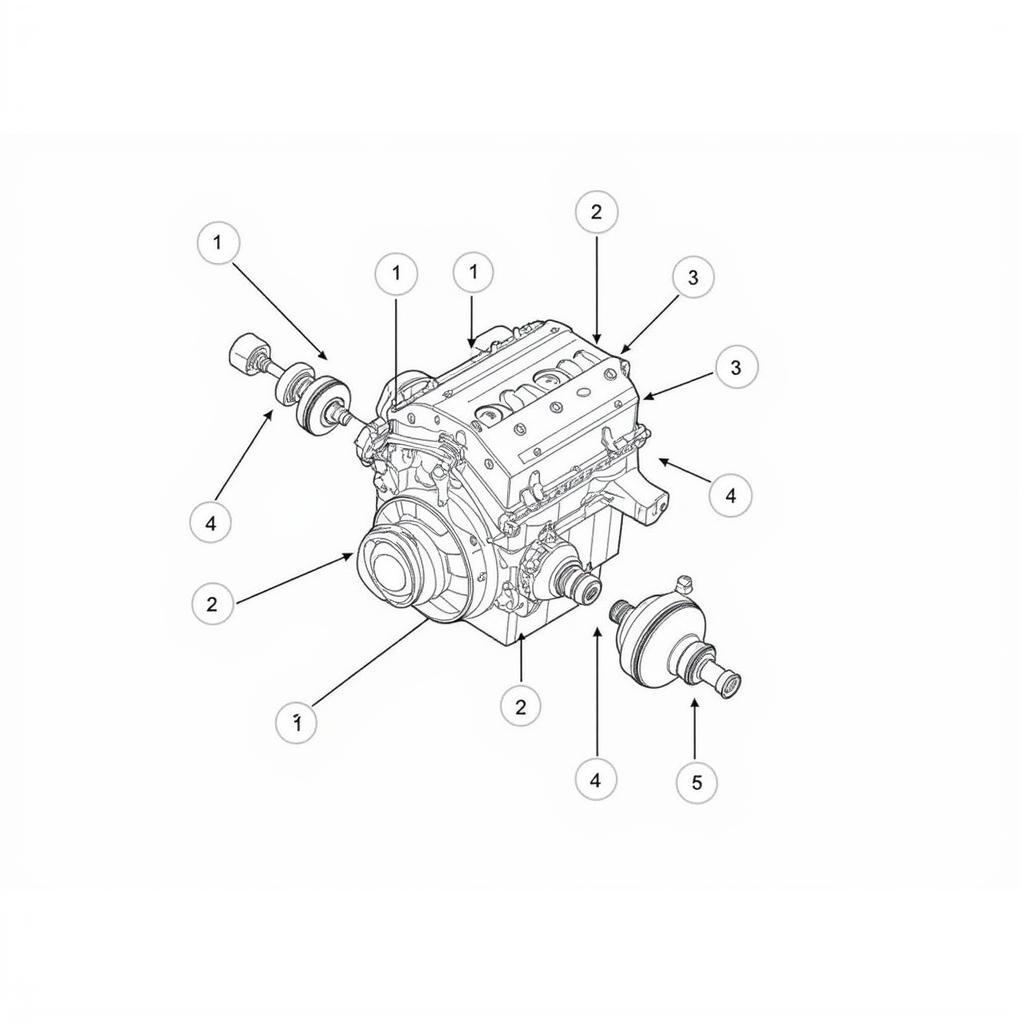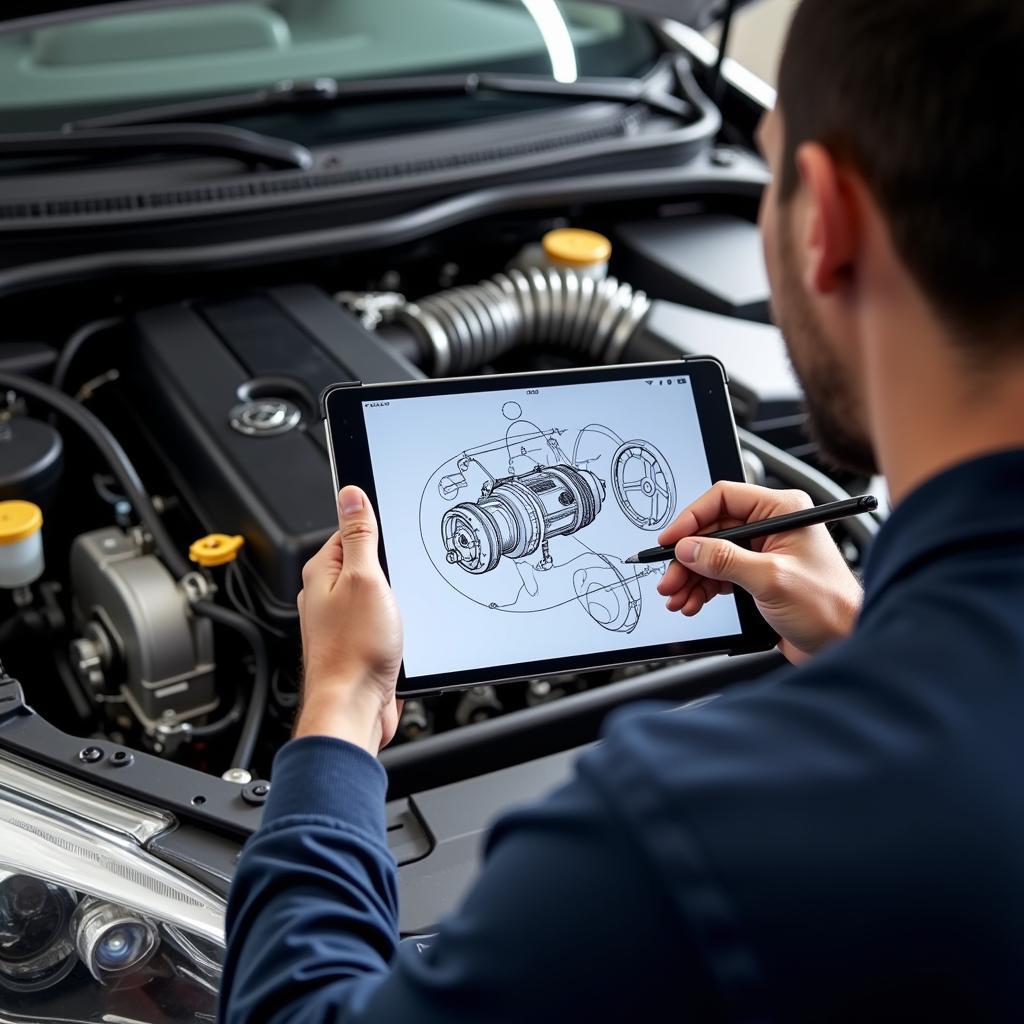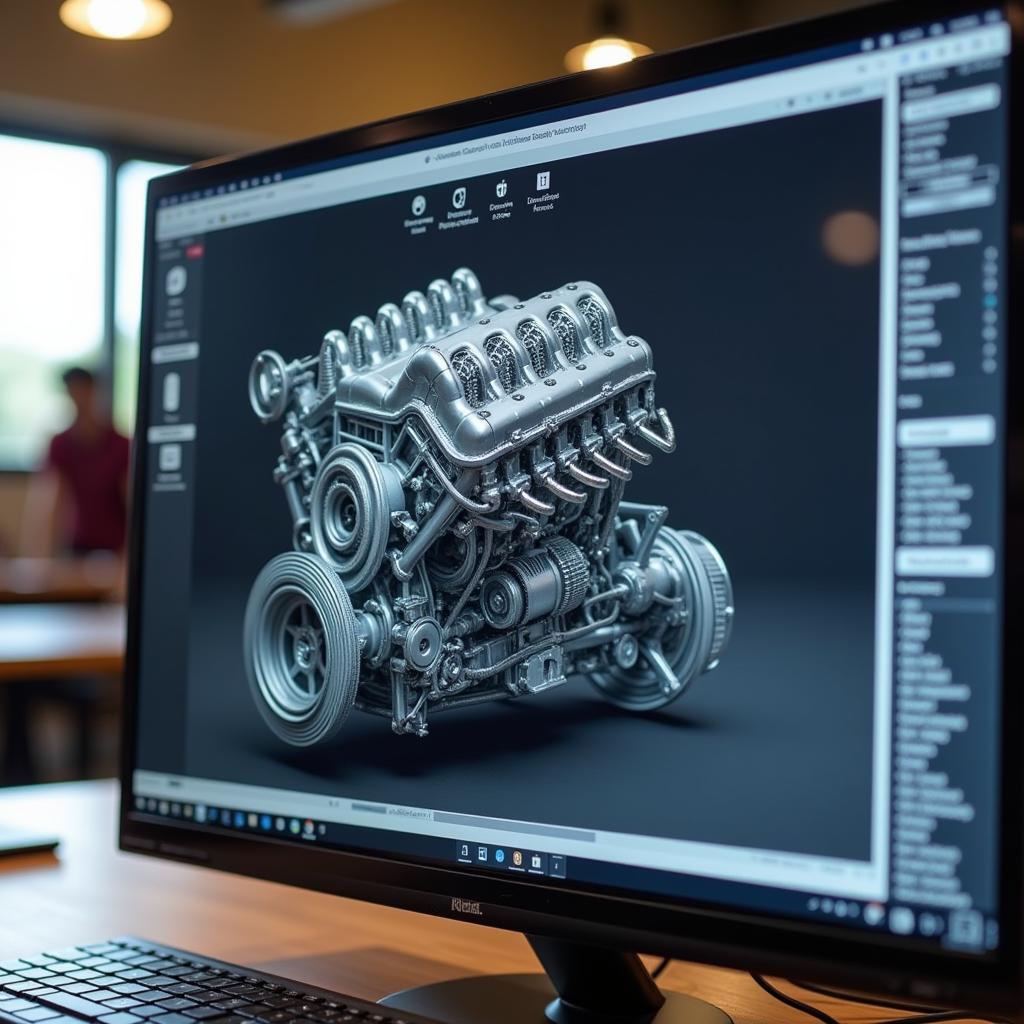Car Engine Details Drawings are essential for understanding the complex inner workings of an engine. Whether you’re a seasoned mechanic, a passionate car enthusiast, or simply curious about automotive technology, these drawings provide valuable insights into the intricate design and function of an engine’s components. From the smallest bolt to the largest cylinder block, these detailed illustrations unlock the secrets of how an engine breathes, generates power, and propels a vehicle forward.
Understanding car engine details drawings can empower you to diagnose problems, perform repairs, or even modify your engine for enhanced performance. They serve as a roadmap, guiding you through the labyrinth of parts and connections that make up the heart of your car. Let’s dive into the world of these technical marvels and explore the different types, their uses, and how to interpret them effectively. After this, you’ll have a clearer idea of what goes into making your car run.
Decoding the Different Types of Car Engine Details Drawings
There are various types of car engine details drawings, each serving a specific purpose. Assembly drawings, for instance, illustrate how different parts fit together, like a jigsaw puzzle, providing a comprehensive overview of the engine’s structure. Component drawings, on the other hand, focus on individual parts, offering detailed views of their dimensions, tolerances, and material specifications. These are crucial for manufacturing and replacement. Schematic diagrams simplify the engine’s systems, using symbols to represent components and their connections, making it easier to understand the flow of fluids, electricity, or other processes.
Then we have exploded view drawings. These are especially helpful for visualizing the assembly sequence of complex components, showing how each part fits into the whole. Finally, cross-sectional drawings provide a cutaway view of the engine, revealing its internal structure and the relationships between different parts. These drawings are particularly useful for understanding the workings of internal components and how they interact with each other.
What is the purpose of a car engine details drawing? It allows for precise understanding of engine components and their interaction.
 Car Engine Details Drawing – Assembly Diagram
Car Engine Details Drawing – Assembly Diagram
Understanding these different drawing types is essential for effectively interpreting the information they present. They provide a visual language for communicating complex engineering concepts, making it accessible to a wider audience.
Utilizing Car Engine Details Drawings for Diagnostics and Repair
Car engine details drawings are invaluable tools for diagnosing and repairing engine problems. By referring to these drawings, mechanics can pinpoint the location of faulty components, understand their function within the system, and determine the necessary repair procedures. For example, a mechanic might use a component drawing to identify a worn-out piston ring or a schematic diagram to trace a faulty electrical connection.
How can I use a drawing to diagnose a problem? The drawing helps pinpoint the location and function of potentially faulty components.
 Car Engine Details Drawing – Diagnostic Use
Car Engine Details Drawing – Diagnostic Use
These drawings also assist in ordering replacement parts. By providing precise measurements and specifications, they ensure that the correct parts are ordered, avoiding costly delays and potential compatibility issues. Moreover, they can guide the reassembly process, ensuring that all components are installed correctly and in the proper order.
How to Interpret Car Engine Details Drawings Effectively
Interpreting car engine details drawings effectively requires a basic understanding of engineering conventions and symbols. The drawings often employ a combination of orthographic projections, which show different views of the object, such as front, side, and top. Understanding these projections is crucial for visualizing the three-dimensional form of the component.
Symbols are used to represent various components, such as gears, bearings, and seals. Familiarizing yourself with these symbols is essential for deciphering the information presented in the drawing. Additionally, the drawings often include dimensions and tolerances, which specify the acceptable range of variation in the size and shape of the component. Understanding these specifications is crucial for ensuring proper fit and function.
Why are best car detailing microfiber cloths important for engine detailing? They effectively remove grease and grime without scratching delicate surfaces. For further details on selecting the best car detailing microfiber cloths, check out our dedicated article on best car detailing microfiber cloths.
The Future of Car Engine Details Drawings
With advancements in computer-aided design (CAD) software, car engine details drawings are becoming increasingly sophisticated and interactive. 3D models allow for a more immersive and intuitive understanding of the engine’s structure and function. These models can be rotated, zoomed, and even animated to visualize the movement of parts and the flow of fluids.
“The evolution of CAD software has revolutionized how we design, analyze, and interact with engine components,” says Dr. Emily Carter, a leading automotive engineer. “3D models and interactive simulations offer unprecedented insights into engine performance, enabling engineers to optimize designs for efficiency and reliability.”
What does the future hold for these drawings? Expect more interactive 3D models and augmented reality applications.
 Car Engine Details Drawing – 3D Model
Car Engine Details Drawing – 3D Model
Furthermore, augmented reality (AR) applications are emerging, allowing mechanics to overlay digital drawings onto the physical engine in real-time. This technology has the potential to revolutionize diagnostics and repair, providing mechanics with instant access to relevant information and guidance during the repair process. “Augmented reality is transforming the way mechanics interact with engines,” adds John Miller, a senior technician at a leading automotive repair shop. “By overlaying digital information onto the physical engine, AR enhances diagnostic accuracy and streamlines the repair process.”
Conclusion
Car engine details drawings are essential tools for anyone working with or interested in car engines. From diagnostics and repair to design and modification, these drawings provide a wealth of information that unlocks the secrets of engine function. By understanding the different types of drawings, their uses, and how to interpret them effectively, you can gain a deeper appreciation for the complex machinery that powers our vehicles. Keep learning, keep exploring, and the world of car engines will continue to reveal its fascinating intricacies. Need help with your car engine? Contact us on WhatsApp: +1(641)206-8880 or Email: [email protected]. We have a 24/7 customer support team.
FAQ
-
What is the purpose of an exploded view drawing? An exploded view drawing shows how the parts of an assembly fit together.
-
Where can I find car engine details drawings? You can find them in repair manuals, online databases, and manufacturer websites.
-
What are the basic types of car engine details drawings? Assembly drawings, component drawings, schematic diagrams, exploded view drawings, and cross-sectional drawings.
-
How do I interpret dimensions and tolerances on a drawing? Dimensions specify the size, and tolerances indicate the acceptable range of variation.
-
Why are schematic diagrams important? They simplify complex systems for easy understanding.
-
What are orthographic projections? They show different views of an object (front, side, top) to visualize its 3D form.
-
How has CAD software impacted these drawings? It has made them more sophisticated and interactive, allowing for 3D models and animations.
For information on designing septic tanks using AutoCAD, see our guide on cara buat detail septic tank autocad.
Do you have any other questions about car detailing or engine repair? Check out our other informative articles on CarDetailingUK! Our team is always available to assist you. Contact us via WhatsApp: +1(641)206-8880 or Email: [email protected] for immediate assistance. We are available 24/7.

Leave a Reply